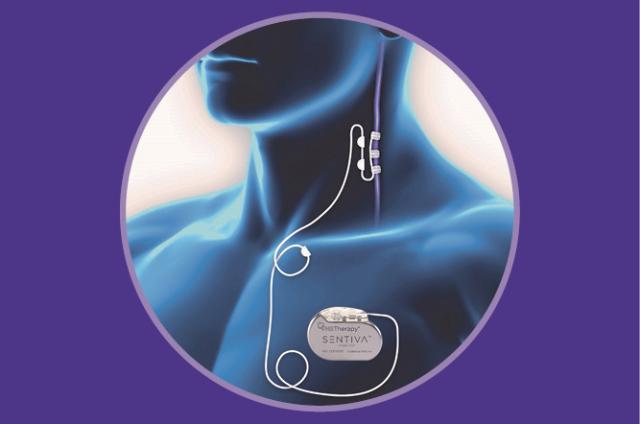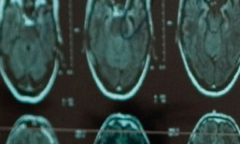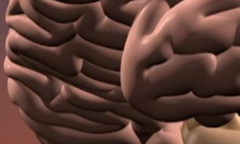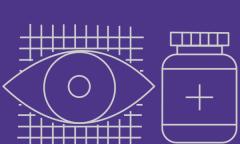Vagus Nerve Stimulation therapy (VNS Therapy) is a treatment for drug-resistant epilepsy that involves a stimulator (or 'pulse generator') which is connected, inside the body, to the left vagus nerve in the neck. The stimulator sends regular, mild electrical stimulations through this nerve to help calm down the irregular electrical brain activity that leads to seizures.
There are several ways to treat epilepsy. How well each treatment works varies from one person to another. Vagus nerve stimulation therapy is a form of treatment for people with epilepsy whose seizures are not controlled with medication.
What are the vagus nerves?
The vagus nerves are a pair of nerves that start in the brain and run through the body. They carry messages between the brain and the body.
What is VNS Therapy and how does it work?
Vagus nerve stimulation (VNS) Therapy is a treatment for drug-resistant epilepsy that involves a stimulator (or 'pulse generator') which is connected, inside the body, to the left vagus nerve in the neck. The stimulator sends regular, mild electrical stimulations through this nerve to help calm down the irregular electrical brain activity that leads to seizures.
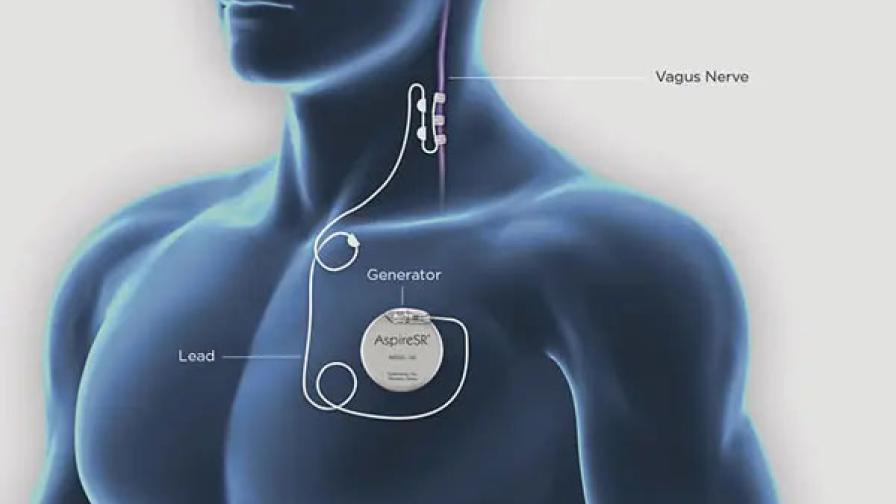
What is the aim of VNS Therapy?
VNS Therapy aims to reduce the number, length, and severity of seizures. For some people, their seizures become much less frequent, for some it may reduce their seizures a little, and for others it has no effect. VNS Therapy may reduce the length or intensity of seizures but this does not happen for everyone. It may also reduce the time it takes to recover after a seizure. It is possible to completely stop some seizures but it does not ‘cure’ epilepsy.
VNS Therapy may not have an effect straightaway; it can take up to a year for it to have an effect on someone's seizures. It is used alongside anti-seizure medications (ASMs) not instead of them. However, if VNS Therapy works, it may be possible to reduce a person’s ASMs over time.
Can I be considered for VNS Therapy?
VNS Therapy is usually considered if you have tried a number of ASMs which have not fully controlled your seizures, and if you are not suitable for, or do not want to have, brain surgery.
People who are considering VNS Therapy will usually be given information about VNS from their neurologist or epilepsy specialist nurse.
What is the stimulator like?
The stimulator is a bit like a heart pacemaker. It measures approximately 4 x 2cm and is implanted (placed) under the skin in the upper chest (under the left collar bone) during a small operation under general anaesthetic. The operation lasts around one and a half hours.
Because of the operation, there will be a small lump where it lies, and a small scar where it is put in. A lead connects the stimulator in the chest to the vagus nerve in the left side of the neck. Because the electrodes are coiled around the nerve in the neck, there will also be a small scar where they are inserted, usually in the fold of the neck.
How does the stimulator work?
The stimulator is usually switched on within two weeks of it being implanted. The neurologist or nurse will programme the stimulator and set the amount (strength and length) of the electrical stimulation given. The amount of stimulation varies from person to person, but is usually started at a low level and slowly increased to a suitable level for each person. Usually it is set at 30 seconds of stimulation every five minutes through the day and night.
The stimulator has a battery inside it which can last approximately five years. When the battery is low, the stimulator needs to be replaced, with a shorter operation to just replace the generator/stimulator (usually lasting 45 minutes).
What can VNS Therapy do if I have a seizure?
Some people have a warning or aura, which is a focal preserved consciousness seizure (previously called a focal aware seizure), that tells them that they may have a further seizure. When this happens, the VNS Therapy magnet can be passed over the stimulator to give stronger stimulation for a slightly longer period of time. This may stop the aura from developing into another seizure, or may reduce how long it takes the person to recover after a seizure.
The magnet can be worn on the wrist like a watch, on a belt, or attached to a wheelchair. For people who have no warning before a seizure, someone else could use the magnet for them when a seizure happens. This may help stop or shorten the seizure. The magnet can also be swiped over the VNS after a seizure and it may help with post seizure recovery.
Some people may experience an increase in heart rate during their seizures. The AspireSR® and SenTiva® devices can pick up these changes and give automatic stimulation in a similar way to magnet stimulation. This can help stop seizures before they spread across the brain.
Does VNS Therapy have any side effects?
VNS Therapy can cause side effects but usually only during the time that VNS stimulation is being increased to reach the suitable level for the individual, and when the VNS is delivering the current. Side effects may not happen for everyone but can include discomfort in the throat, a cough, and sometimes a hoarse voice.
Side effects usually reduce over time and do not usually mean that the stimulator has to be switched off. If side effects are a problem, the neurologist or nurse can adjust the settings, or the magnet can be held over the stimulator for a few seconds to briefly stop the stimulation.
VNS Therapy does not affect, and is not affected by, anti-seizure medication.
What about any other positive effects?
Some people feel that VNS Therapy improves their mood, memory, or alertness, and may also help reduce depression or have a positive effect on their quality of life (overall wellbeing).
What happens if it does not work?
VNS Therapy does not work for everyone. If there is no benefit from VNS Therapy, you and your specialist may consider having it switched off or removed. Even if VNS Therapy has no effect on the seizures, it might have other positive effects (see previous question).
Can I have an MRI scan if I have VNS Therapy?
If you have VNS Therapy and need an MRI, it is important that everyone involved with the scan is aware, so that they can decide if the scan can be done safely.
VNS Therapy is 'MRI conditional' meaning that, as long as certain precautions are followed, an MRI scan is possible on some areas of the body. Visit LivaNova (makers of the VNS Therapy system) for MRI safety information.
X-rays and CT scans
X-rays and CT scans do not affect, and are not affected by, VNS Therapy. This is because they do not produce enough radiation to cause damage to the stimulator. However, extra care may be needed, or the stimulator may need to be switched off for the scan, and turned back on again afterwards.
Can I use an induction hob?
VNS devices may be affected by the magnet in an induction hob. However, you would have to be leaning your chest over the induction hob for it to affect the VNS. In addition, the magnet in the induction hob would only disable the VNS for the period of time it is held over the device - so usually relatively short time periods. It stops the usual stimulation from working temporarily, restarting once the magnet is not close to the VNS device.
Can I go through airport security?
At the airport, you can provide security officers with your VNS Therapy ID card, which explains that you have an implanted medical device. You can request a pat down check instead.
Further information
LivaNova (makers of the VNS Therapy system) for more information about VNS Therapy for patients and carers, and for medical professionals.
Epilepsy Society is grateful to Dr F J Rugg-Gunn, Consultant Neurologist and Honorary Associate Professor, Clinical Lead, Chalfont Centre for Epilepsy, who reviewed this information.
Information produced: June 2025
Download this information
For a printed copy contact our Helpline.
Brain scans
In order for a person to be suitable for surgery, it is necessary to confirm that seizures are arising from one part of the brain and that it is safe to remove this part. This requires many tests including MRI brain scans.
Epilepsy surgery
Brain surgery or neurosurgery is one way of treating epilepsy. Certain criteria have to be met and tests have to be done to assess suitability.
Anti-seizure medication (ASM)
This information is for both adults and children with epilepsy and answers some questions you might have about anti-seizure medication. Where we talk about controlling seizures or ‘seizure control’ we mean stopping seizures from happening.

